Is your choice of headphones bone to be wild or air on the side of caution?
So you’ve heard the buzz about bone conduction headphones. Though tempted to give them a shot, you’re not sure if they’re really worth the hype or if they’re better than your current wireless headphones (A.K.A. air conduction headphones).
You also found out that bone conduction headphones are better for people with hearing loss. Does that mean they don’t work as well for people with normal hearing?
To answer all of your burning questions, we’ve written down everything you need to know to choose between air conduction and bone conduction headphones.
Let’s dive right in!
What Is Air Conduction?
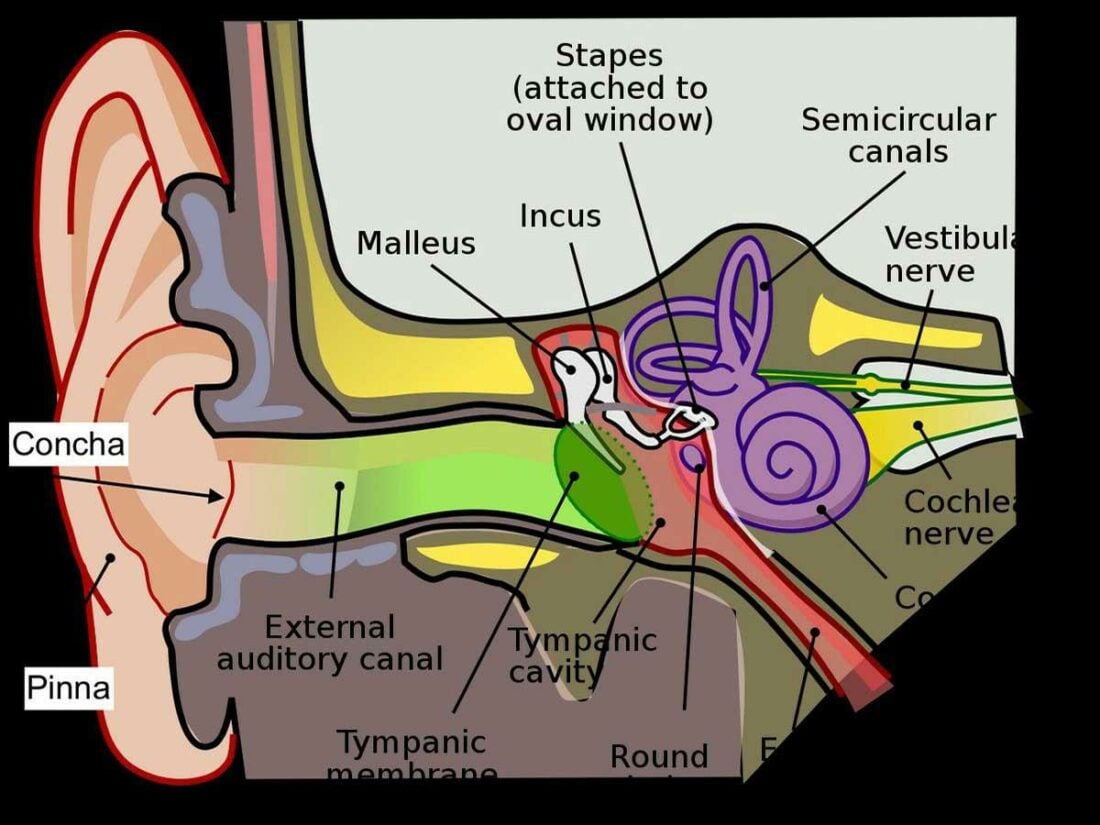
Air conduction is the process where sound waves travel through the air and get picked up by the ears. When sound waves enter the ear canal, they cause the eardrum to vibrate. The vibrations then travel through the middle ear bones to the cochlea in the inner ear. And this is how people hear sounds.
This method is also how most audio devices operate – including headphones. But there are two types of air-conduction headphones: regular and open-ear designs. Let’s discuss each further below:
Regular headphones
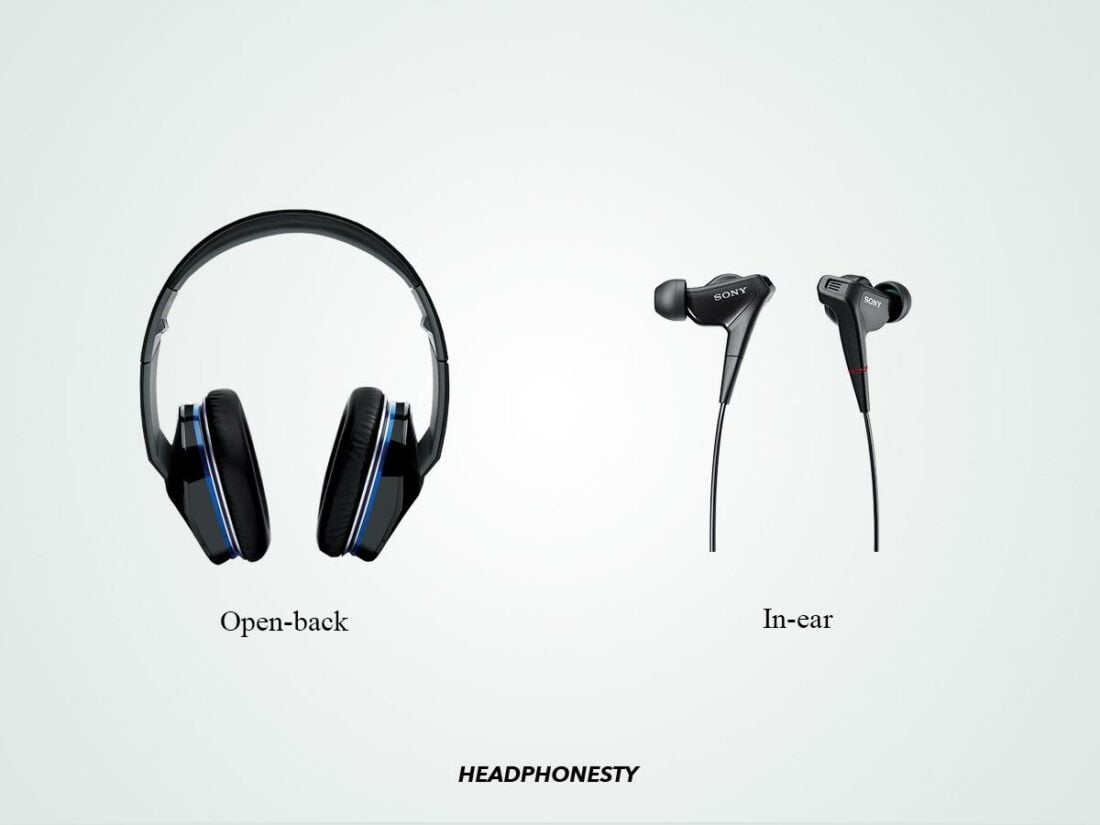
As the name implies, these are the most common types of headphones you see. And there are three types of regular headphones based on the ear cup designs:
- Open-back: These headphones have a design where the back of the ear cups is exposed. This allows air to circulate the drivers, resulting in a more natural and open soundstage than closed-back headphones.
- Closed-back: These headphones have closed-off ear cups that fully enclose the ears. The ear cups act as a physical barrier that isolates sound and prevents audio leakage, resulting in a closed-off soundstage compared to open-back headphones.
- In-ear: In-ear headphones – or earbuds – have ear tips that go into the ear canals. The ear tips create a seal to block external noise and deliver audio directly into the ear drums.
Open-ear headphones
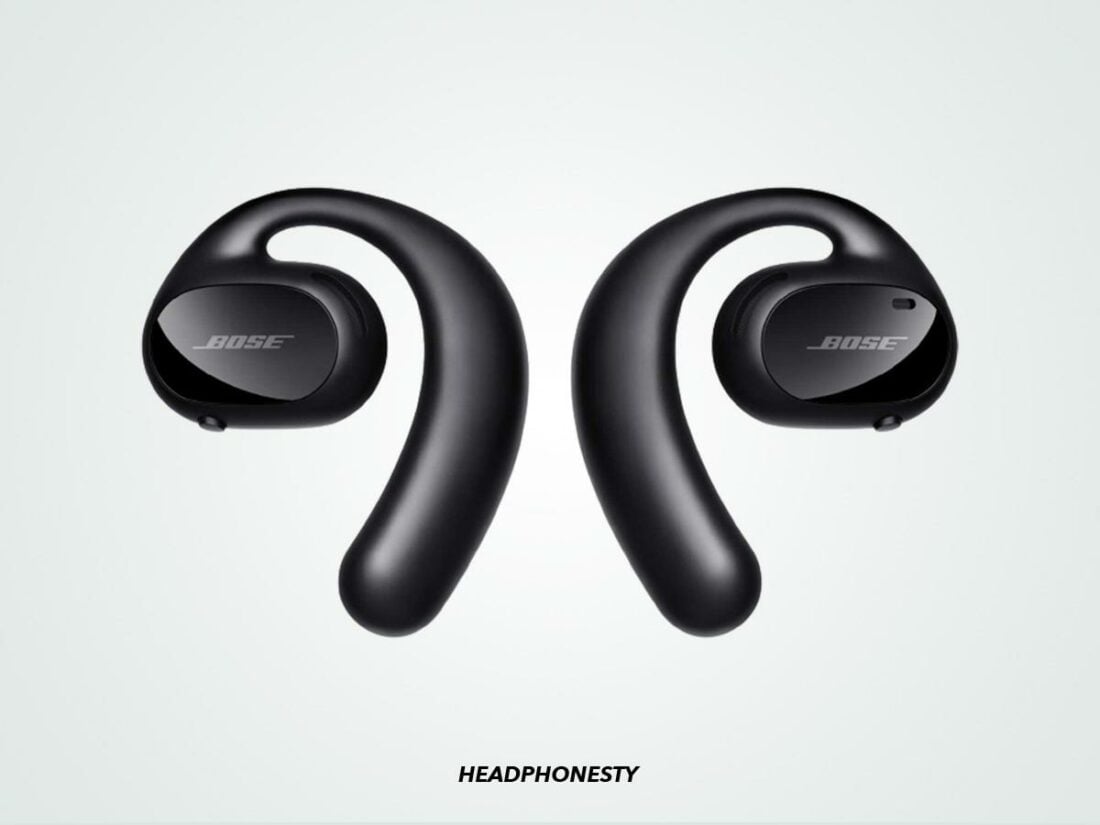
Unlike typical air-conduction headphones that isolate or enclose the ears, open-ear headphones leave the ear canal unblocked. Open-ear headphones are designed to offer a more natural listening experience and improve awareness of your surroundings.
An example of open-ear headphones is the Bose Sports Open earbuds. These Bose headphones position the drivers slightly above the ear canals and secure the fit with ear hooks.
The Sony LinkBuds are also a noteworthy example that features an open-ear design but with a more discreet look.
What Is Bone Conduction?
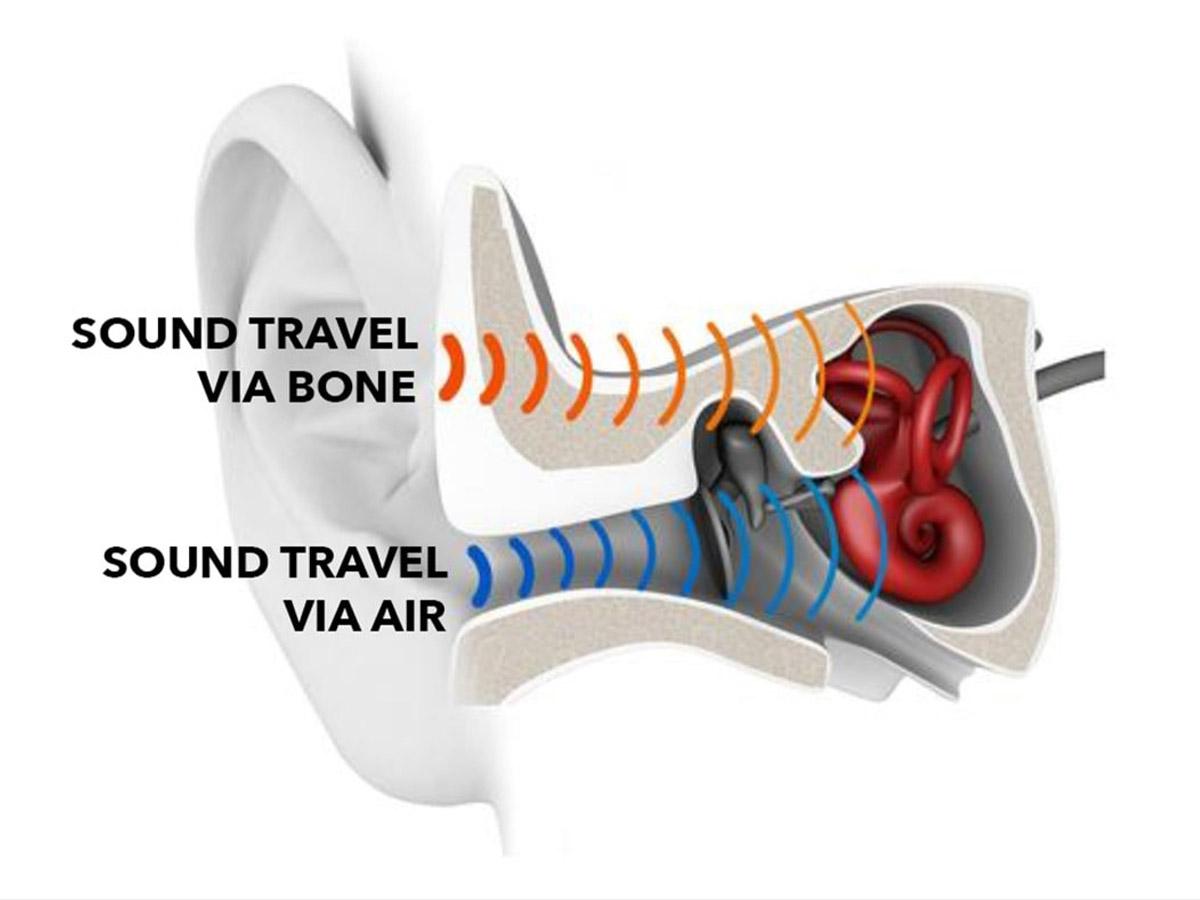
Bone conduction is a method of transmitting sound through the bones of the skull rather than through the air. It works by converting audio data into vibrations using transducers. The vibrations are sent to the inner ear via the skull bones, bypassing the middle ear bones. Once the vibrations reach the inner ear, it perceives them as normal sounds.
People with conductive hearing loss, which occurs when the outer or middle ear gets damaged, can use bone conduction headphones. However, they won’t work for people with sensorineural hearing loss since it’s caused by damage to the inner ear (cochlea) or auditory nerve.
There are two types of bone-conduction headphones: regular (worn around the back of the head or neck) and bone-anchored hearing aids (surgically implanted).
Regular bone conduction headphones
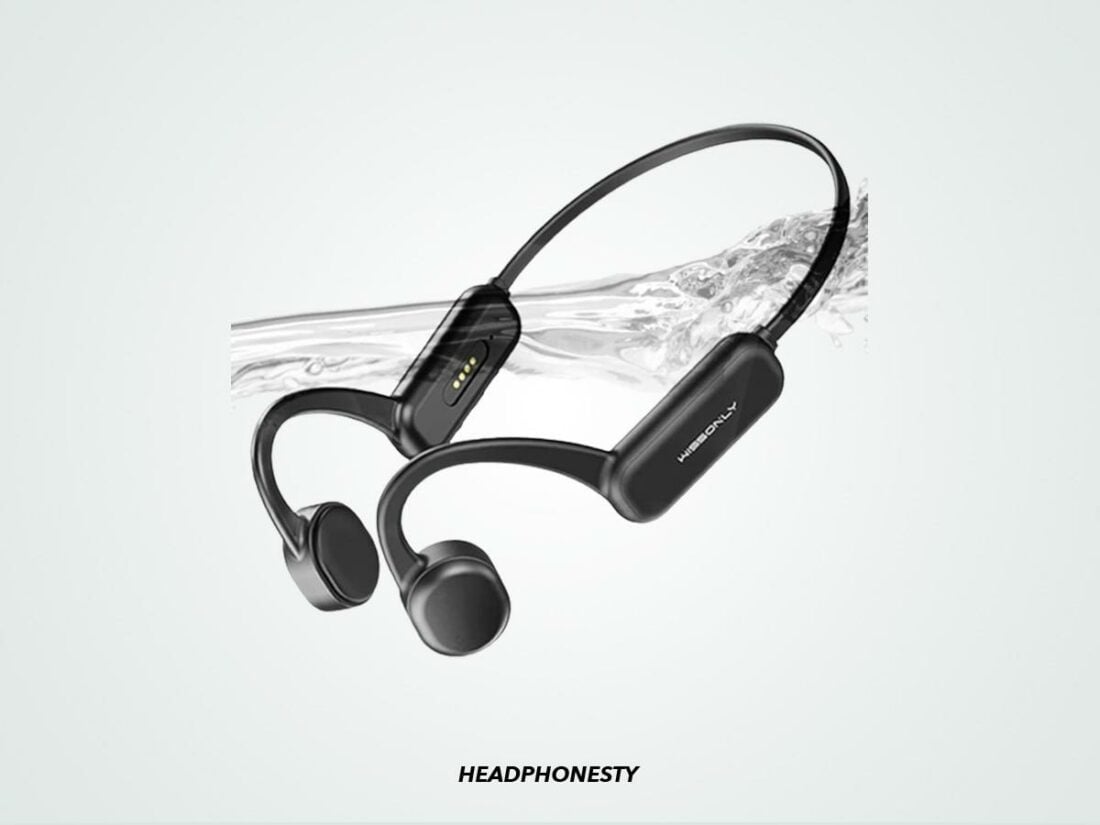
Most bone-conduction headphones have an around-the-neck design with transducers placed in front of your ears. They send vibrations to your inner ear via the skull bones.
Plus, they don’t block the ear canals, meaning you can still hear your surroundings while wearing them. However, some bone-conduction headphones may give borderline uncomfortable vibrations when playing at max volume.
Bone Anchored Hearing Aids (BAHA)
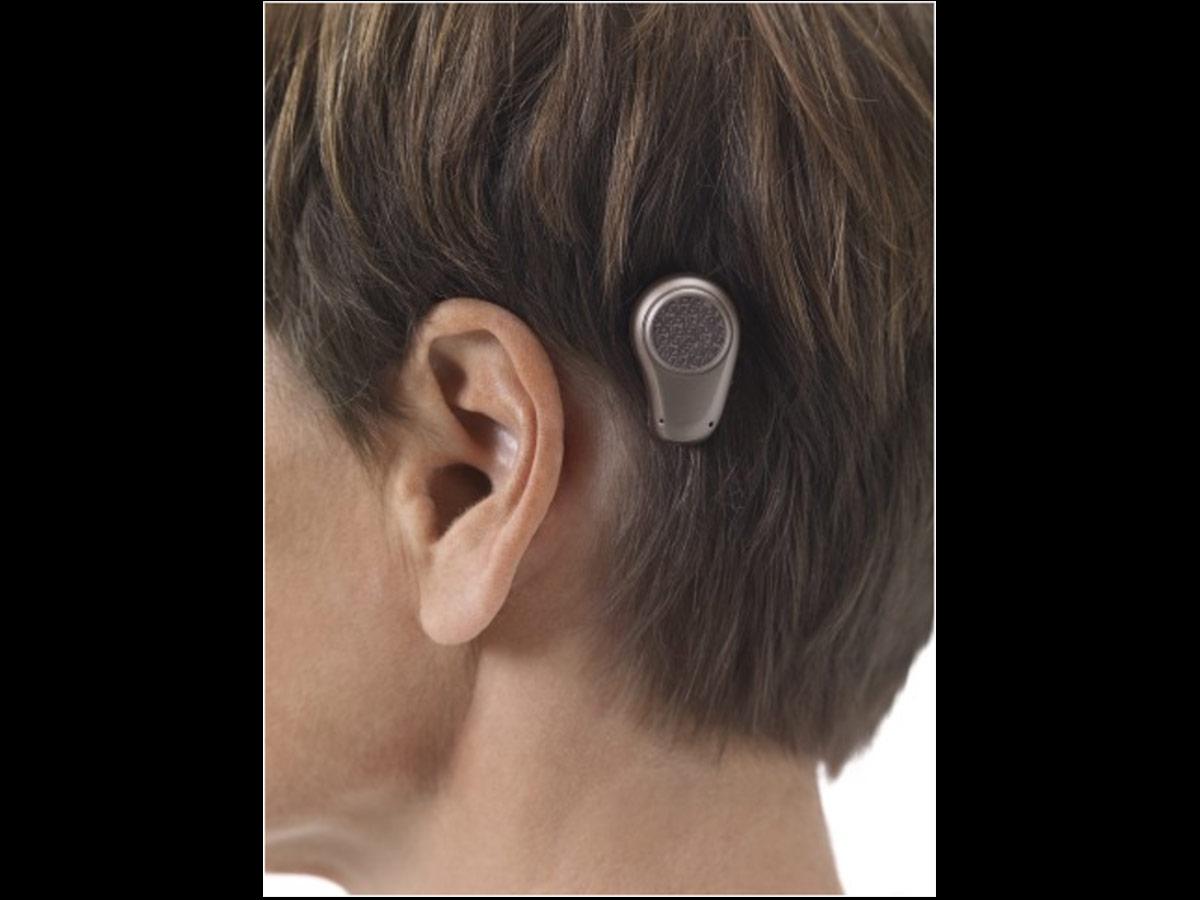
A bone-anchored hearing aid (BAHA) is a type of hearing aid that uses a titanium implant and an external sound processor to transmit sound to the inner ear. The implant is usually placed behind the ears, and the external sound processor attaches to it to capture noises and convert them into vibrations.
It’s similar to wearing permanently attached bone-conduction headphones. This system bypasses the outer and middle ear, which can be especially helpful for people with conductive hearing loss.
BAHA is also good for those with single-sided conductive hearing loss since it doesn’t have to come in pairs like headphones.
Air Conduction vs Bone Conduction: Which Is Better?
We compared air and bone conduction headphones in several aspects to help you decide which is best for you. Let’s break it down:
Sound quality
Air conduction headphones use the innate way our ear works, allowing for a more natural and higher quality sound reproduction.
On the other hand, bone conduction headphones can’t reproduce the subtle details in the music. And this is because they have problems reproducing the full frequency response range that humans can hear. On top of that, leaving the ear canals open means they also compete with external noises – further drowning what little details they can produce.
Sound leakage
Both air conduction and bone conduction headphones have a degree of sound leakage. Most closed-back air conduction headphones don’t have any issues with sound leakage. However, open-back air conduction headphones tend to leak sounds since the ear cups aren’t enclosed completely.
Bone conduction headphones also leak sounds – but not nearly as loud or audible as sound leakage from open-back air conduction headphones.
Build
Both air conduction and bone conduction headphones feature models with rugged builds, waterproof certifications, and durable materials like stainless steel or titanium.
While some air conduction headphones have portability features like foldable ear cups, most bone-conduction headphones have more compact designs overall. They are also lighter and easier to wear. So, you won’t have to deal with problems like sore ears from bad-fitting ear cups or clamping force that’s too tight.
Comfort and fit
Most bone conduction headphones don’t have paddings on the band or earpieces. However, they don’t put any pressure on your head – so they don’t really need paddings to be comfortable. But they rely on ear hooks to stay on your head, which can result in slight discomfort around your ears if worn over a prolonged period.
On the other hand, air conduction headphones have a wide range of comfort and fit features. Some higher-end headphones have extremely plush memory foam padding to make up for the heavier clamping force they put on your temples. But then again, your ears can also get warm after wearing them for a while.
That said, the comfort and fit of headphones are highly subjective to you as a user. Therefore, finding out which one works for you might require trying each model yourself.
Price
Regarding the price-to-value ratio, bone conduction headphones win over air conduction ones. Bone conduction headphones typically cost between $150 to $199 with an excellent build, battery, portability, and other features.
While there are dirt cheap air conduction headphones, most don’t really offer any notable quality other than the low price. And if you’re looking at top-of-the-line models, air conduction headphones can go as high as $1,000 a pair.
Air Conduction vs Bone Conduction: Which Should You Go For?
If you want crisp details, punchy bass, and generally excellent sound quality from your headphones, the clear answer is to go for air conduction headphones. They pack bigger drivers and use the natural way our ears operate to deliver sound.
But if you want small headphones that you can toss into your bag or headphones that let you stay alert of your environment – bone conduction is the way to go. Choosing the best bone conduction headphones is also easier since you have fewer aspects to decide on, like ear cup materials and clamping force.
Conclusion
Comparing air and bone conduction headphones is not exactly an apple-to-apple comparison. While they have the same function as headphones, they’re clearly designed for different audiences and use cases.
But with the comparison we’ve drawn above, we hope you can now decide which type of headphones you want to get as your next pair.
Have you tried both bone conduction and air conduction headphones before? Let us know about your experience in the comments!
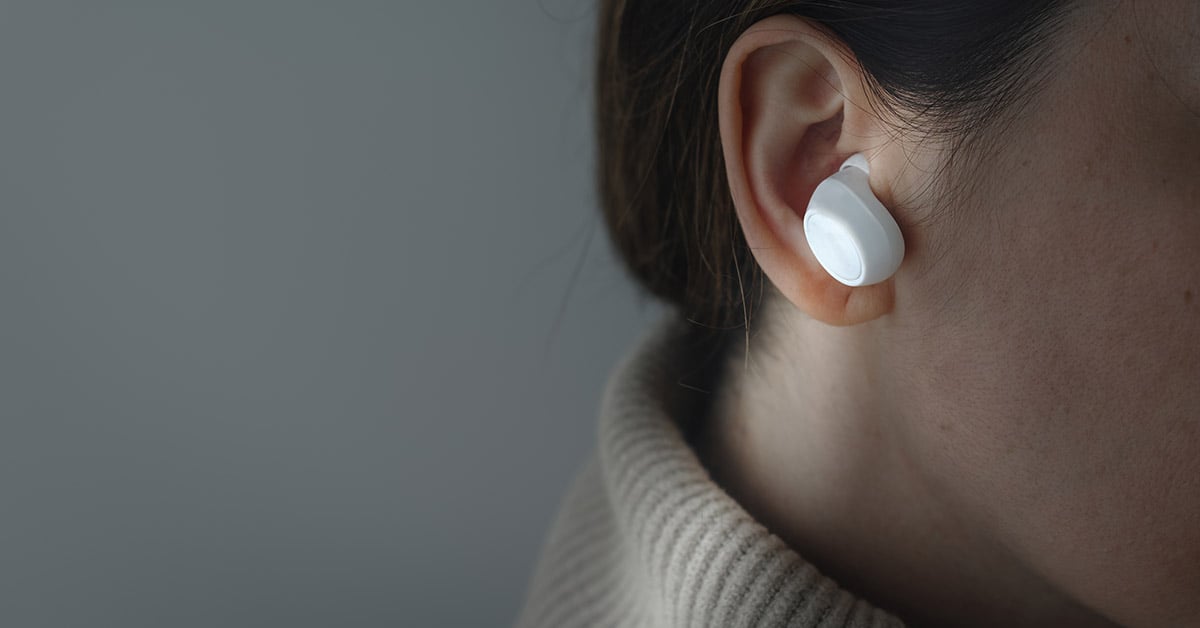
hii Jefri how are you?
Good job in the comparaison between the air conduction and the bone conduction it was really amaizing. I have a question to ask you. I am planning to buy a headphone however i am hesitating between the air conduction or a over ear headphone. Do you think that the air conduction damage less the hearling loss than the over ear headphone or vice versa?
I really need to understand everything about it.
Thanks you Jefri
Matyah